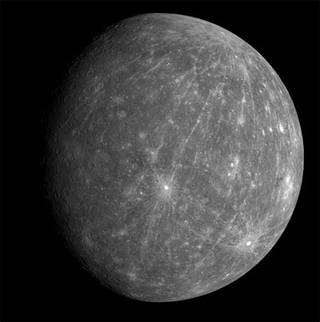
Image credit: NASA
We will open at 8am on Monday May 9th
On May 9, Mercury and Earth will partner with the Sun in a celestial swing dance that only happens about a dozen times per century. The resulting transit of Mercury, as astronomers call this interaction, is similar to the more familiar and common solar eclipse. Nearly every year, the moon passes in front of the Sun, partially or completely blocking it from view. In 2017, for instance, a total solar eclipse on August 21 will be visible from a path that stretches across the United States. The moon, however, isn’t the only celestial object that passes in front of the Sun. The positioning of Mercury and Venus between Earth and the Sun means these bodies also occasionally move in front of, or transit, the Sun’s face, as seen from Earth. Compared to solar eclipses, these planetary transits are rare. Transits of Venus, for instance, generally happen a little less than twice per century. The last one is still fresh in many of our minds, materializing in the northern Arizona sky just four years ago. The next one won’t come around until 2117. Partly because Mercury is closer to the Sun than Venus and thus orbits the Sun more rapidly and frequently, Mercury transits are more common than those of Venus, occurring 13 or 14 times per century. The last one was in 2006 and after the May 9 display, the next Mercury transit will show itself in 2019.
German mathematician and astronomer Johannes Kepler was the first person to predict the occurrence of Mercury and Venus transits but never observed one, dying a year before a Mercury event in 1631. Thanks to Kepler’s calculations, however, Frenchman Pierre Gassendi will forever serve as a footnote in the study of transits. A priest and scientist, Gassendi also taught philosophy courses and purportedly one of his students was Cyrano de Bergerac, the real-life author on which Edmond Rostand’s 1897 play was based. Gassendi used Kepler’s predictions to observe the 1631 Mercury transit, becoming the first person to document a planetary transit of the sun. In later years, scientists made some fundamental astronomical measurements while observing transits. Most significantly, in the 1700’s English astronomer Edmund Halley proposed using transits to measure the Sun’s distance from Earth. His method was first applied during a Venus transit in 1761 but the resulting estimate, which gave a range of 78,000,000 to 96,000,000 miles, was not very accurate, largely due to inclement weather on Earth that clouded out many observations. The estimate nevertheless served as a reasonable starting point and scientists observing subsequent transits were able to narrow down this number (the actual distance to the Sun averages a little less than 93 million miles).
Modern-day astronomers have applied the study of planetary transits to search for planets around other stars. Using sensitive light detectors, they study the brightness of select stars. In some instances, the astronomers observe a temporary but repeated drop in the brightness of the star. This suggests the presence of a planet that is orbiting that star and blocking a small portion of the starlight. Astronomers have discovered more than 200 exoplanets (planets around stars other than the Sun) using this method of detection.